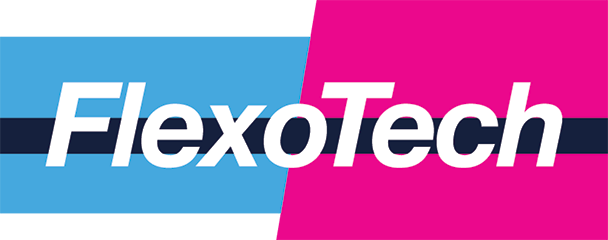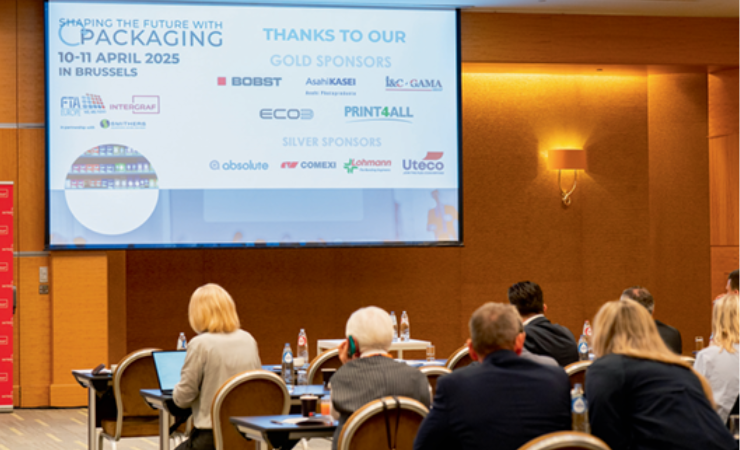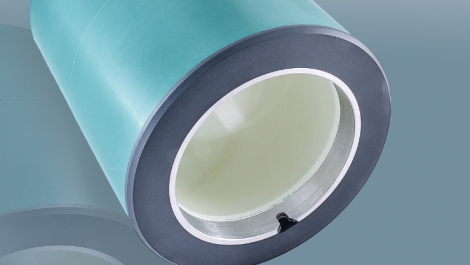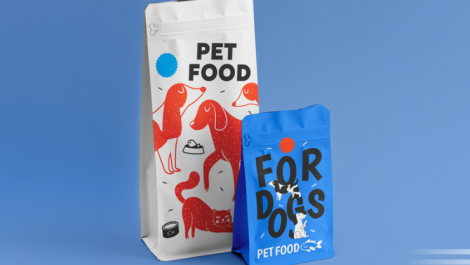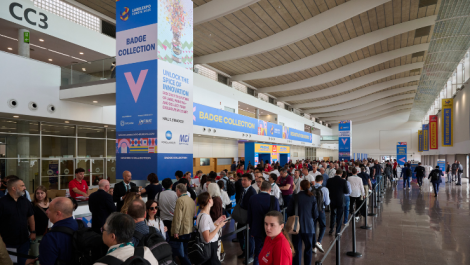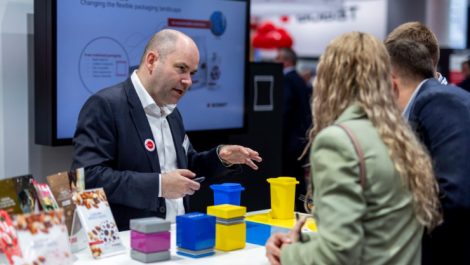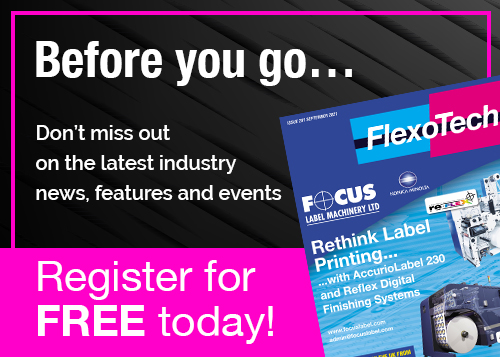The Sheraton Hotel at Brussels Airport was the venue for the “Shaping the Future with Packaging” conference in mid-April. FlexoTech took its place amongst the attendees.
Sustainability and artificial intelligence (AI) never seem to be far away in industry conversations, and the FTA Europe/ Intergraf/Smithers conference “Shaping the Future with Packaging”, which took place in Brussels in April, saw a continuation of that discussion.
Most memorably, the presentation titled “AI in packaging” by Pieter De Buysser, founder of AI consultancy NXTGN, had the audience at the Sheraton Hotel strongly engaged, with an intriguing lead in that culminated in an almost universal moment of realisation.
After outlining different types of AI – Descriptive (what happened?); Diagnostic (why did it happen?); Predictive (what will happen?); Prescriptive (what should we do?); and Generative (generate the future) – Mr De Buysser moved onto a slide that showed the somewhat dated interface of Microsoft Paint.
Why so, is a fair question. He explained that the purpose of MS Paint was not to indulge everyone’s creative urges. It was to get people using and learning new technology such as the computer mouse, which would lead to them unlocking the true value behind the Microsoft computer. Angry Birds did the same with the smartphone; ChaptGPT serves the same function for AI. “It’s a game that allows us to adapt to new technology,” said Mr De Buysser.
The discussion of different types of AI and the different domains or types of content it can influence (textual, audiovisual, coding, design, actions) led Mr De Buysser to set out “six things AI can do”. To illustrate this, he used a fabricated personal care brand and the product and marketing assets that AI could help to deliver.
Firstly, AI creates content in multiple formats; it converts existing content to other formats, for example, taking a shampoo bottle design and being able to create a matching soap bar, a promotional poster, a landing page and a display for POS promotion. AI also explores, allowing a brand to gather knowledge and insights or other content around an existing topic or domain; this could include seeing defects in print production, identifying what is happening and what should be done to rectify it. AI predicts, detecting patterns to identify trends and evolutions. It analyses, gathering insights from content such as conclusions, parallels and inconsistencies, which can be useful in an area such as comparing new legislation to what was in place before. And it represents, by becoming a supporting function in the process, fulfilling a particular role, such as chatbot.
By now, Mr De Buysser was moving towards his conclusion. He said: “The first thing in people’s minds is that AI will make us more productive and efficient, but it’s rarely the only objective. In many cases we are also interested in delivering better quality products or services. We can use it to make us smarter, for example, by democratising access to organisational knowledge; or for hyper-personalisation – personalising a product’s packaging for various choices.”
The final reveal soon came: a business must decide what kind of company it is and seek to deploy AI in support of that aim. Does it want to be known for best total cost? For having the best product? Or for delivering the best experience?
“Knowing this will help you to decide what the right investment should be in AI,” he said.
He outlined five steps: identify the strategic challenges for your business; explore the possible solutions using AI; align on the criteria that are important when bringing new technology on board; determine priorities in the possible solutions; and decide on next steps, including on what still needs to be validated.
Think big, start small
The AI theme was continued on the second day of the conference in a closing session by Paul Horton of beverage brand owner Diageo. A former judge of the FlexoTech Awards, no less, Mr Horton provided some insight into a personalisation project carried out by the whisky brand Johnnie Walker, which utilised artificial intelligence in creating unique Blue Label bottle labels for visitors to its flagship Edinburgh store.
The context provided was a growing gifting market, in which the business has to “think big but start small”. It created a co-creation platform called Project Halo and initiated a pilot project called “A Blend of Artistry”, in association with the Scottish artist Scott Naismith. This used AI to generate new, unique artwork for each label printed in-store in Edinburgh. Visitors answered a series of questions on moods and feelings, and these were fed into the AI engine to create the artwork, based on the artistic style of Mr Naismith.
There were some specific print production challenges that needed to be overcome, in particular since the whole process was carried out in the Johnnie Walker store by retail staff, not print professionals. An automated process was developed that included colour management, conversion of artwork to print-ready format and resolution, and cutter guides.
Mr Horton gave as his top three takeaways: think big, start small; test and learn – progress over perfection; and no-one can go it alone – “it takes a village”.
Achievements and plans
So, what of sustainability, which was referenced at the start of this article. The “Shaping the Future with Packaging” conference was able to bring in Ioannis Antonopoulos, a policy officer at the European Commission, to deliver a briefing on the Packaging and Packaging Waste Regulation (PPWR). It was not for the faint-hearted – an exceedingly dry subject of vital importance to the sector – but could be summed up thus: a lot has been achieved; a lot still needs to be done.
Much of the meat in Mr Antonopoulos’s presentation was contained in two slides, one on the achievements, and one on key measures. The former highlighted that PPWR represents the transformation of a Directive into a Regulation, with directly applicable and enforceable requirements and new rules that give legal certainty for investment decisions. It also introduces ground-breaking targets and bans, including the first ever targets in EU legislation for both waste prevention and reuse, bans on unnecessary packaging formats (mostly linked to plastics), and the possibility for the Commission to reject 2030 derogation requests around recycling targets.
Key measures include the full harmonisation of sustainability requirements in areas such as hazardous substances, recyclability, recycled content in plastic packaging, compostability and reusability; packaging waste prevention targets that increase every five years to 2040; harmonised packaging labels for sorting of packaging waste; minimum recycled content for plastic packaging; prohibited single use packaging formats; and more harmonisation of extended producer responsibility for packaging.
Mr Antonopoulos mentioned an Expert Group on Waste, which has been given an expanded scope to include industry, and to which audience members could apply to join.
In closing, he said the EC “hopes to ensure a proportionate and smooth transition” to the fast approaching demands of PPWR, with the intention of making “packaging and packaging waste a big success”.
There were some questions for Mr Antonopoulos at the close of his session, including one on when Design for Recycling guidelines could be expected. “We want to work with what’s already existing in the standards,” he said. He continued that the EC was “about to conclude” guidelines for plastic packaging, mobilising lots of resources and coming up with a methodology for scoring. “We have to be optimistic,” he added.
Another question was whether products from outside the EU would also need to be compliant with PPWR. To this, Mr Antonopoulos said yes, everything that will be placed on the marketplace will have to be compliant, adding: “There are tools in place for reporting compliance and non compliance and they need to be developed.”
